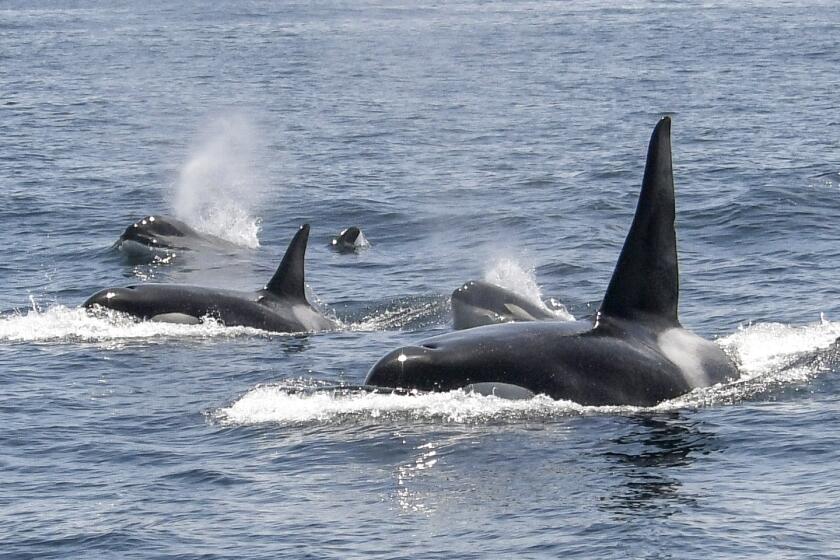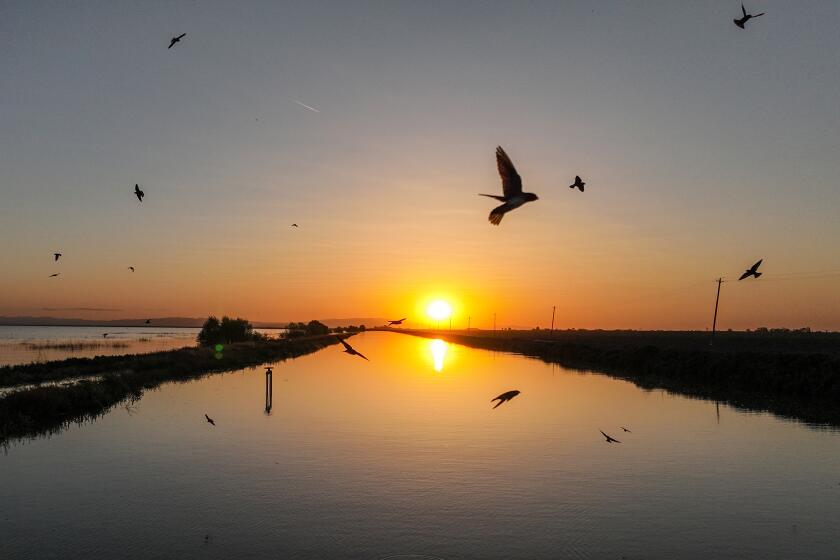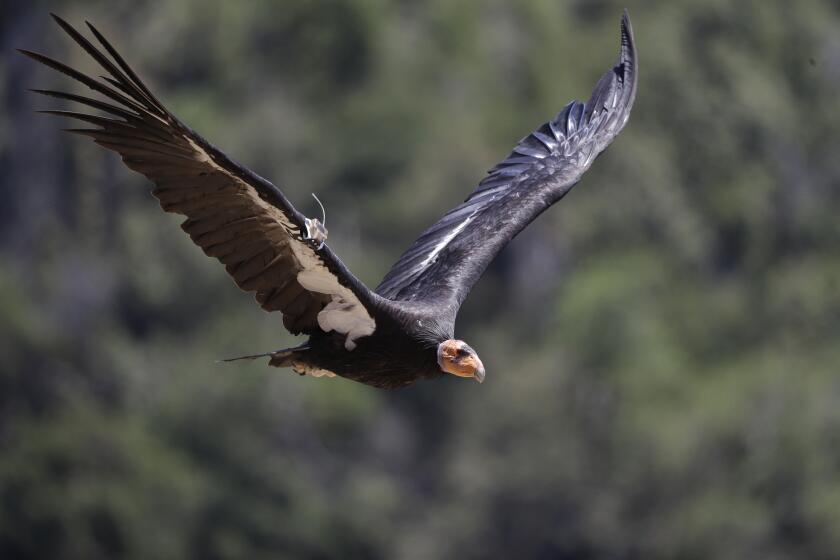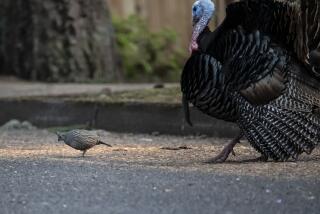
- Share via
SOMEWHERE IN SANTA CLARA COUNTY, Calif. — It’s been a rough month for Tuffy.
He was kidnapped from his parents and watched his abductive foster father eviscerate his sibling. In recent days, his humongous stepsister seems hellbent on pecking out all his feathers and making him scream.
Tuffy is a baby red-tailed hawk who was stolen from his nest by a bald eagle on May 20. He now lives with the regal-looking kidnapper, her mate and their biological offspring, Lola, in a Bay Area forest. By all accounts, his foster parents are bringing him food, and he’s growing quickly. Just this past week, he took a few successful flights away from — and back to — the birdnappers’ aerie.
The avian drama has been playing out before a bevy of astonished birdwatchers, who describe bald eagles and red-tailed hawks as “mortal enemies.” Armed with high-powered binoculars and long camera lenses, the birders insist the circumstances are exceedingly rare. The phenomenon has been recorded in the wild only four other times.
Tuffy, a red-tailed hawk being raised by a bald eagles, stretches its wings. (Video by Doug Gillard)
No one is entirely sure what is going on or why it happened, but several experts said the female eagle was probably getting food for her eaglet when she grabbed the red-tailed chick. Once the chick was in her nest and squawking, she probably got confused.
“I have read a few reports of similar ‘adoptions’ and the researchers have always concluded that the nestling hawk was delivered as prey, but was still alive,” said Cheryl Dykstra, a raptor researcher and editor of the Journal of Raptor Research. “The parent eagles then began to feed the nestling as if it were their own.”
Killer whales have reportedly attacked more than 500 boats in European waters recently. Are they exacting revenge for humanity’s treatment of orcas?
She said similar cases have been documented for other related species, including the case of a white-tailed sea eagle, which adopted a common buzzard.
She said the phenomenon is rare but occurs frequently enough that raptor rehabilitation centers use it to their advantage.

“Many raptors will readily ‘adopt’ foster young placed in their nest,” she said. “It is not clear if they can distinguish their own young, but they typically do not show aggression toward foster young.”
Jordan Spyke, director of operations and raptor rescue at the Montana Raptor Conservation Center, said that he too had heard of such events.
“Red-tailed hawks lay flat when they see predators, especially when they are young,” he said. “I bet the eagle did not know they were alive when she grabbed them.”
It all started about six weeks ago when Doug Gillard, professor of anatomy and physiology at Life Chiropractic College West, in Hayward, was photographing the eagle family.
A former Olympian hammer thrower, Gillard had recently become an avid birdwatcher and photographer. He said he came to the hobby as a result of debilitating back pain; he was looking for something that would relax him and keep his mind off his sciatica.
He had an inkling that watching birds might be his balm. As a young kid in Michigan, he’d found an abandoned great horned owl and raised it in his bedroom. He said there were some rocky nights when the nocturnal hunter would knock around his room, but the two quickly adjusted to each other’s routines.
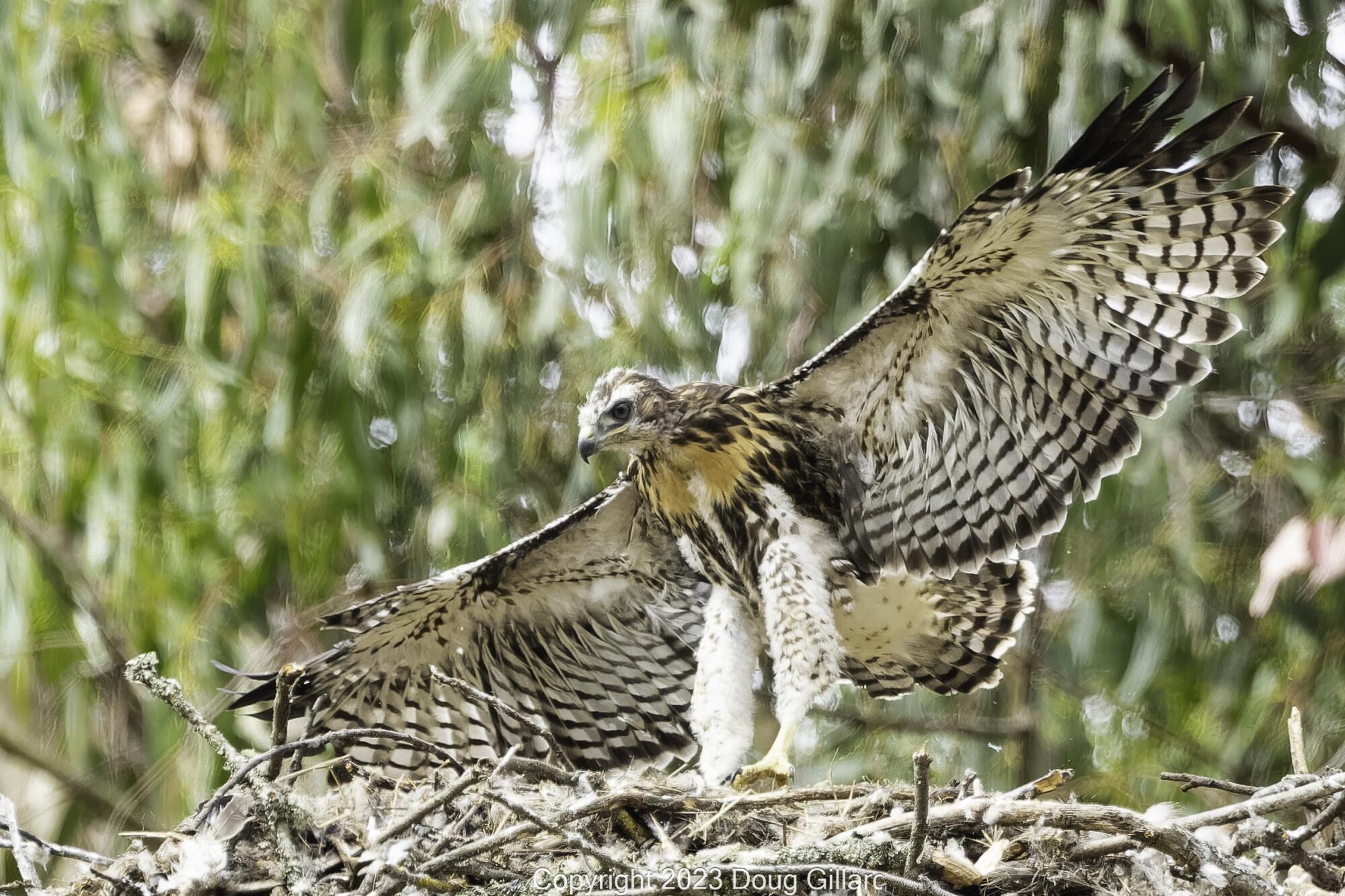
Eventually, the young owl fledged and moved outside. For several weeks, the owlet would return to Gillard’s home to feed from the roof, where the young Michigander had left food. The duration between visits lengthened until one day, the owl stopped returning.
Gillard said he discovered this eagle nest last year but was too late to the scene; the pair’s 2022 eaglet had already fledged.
So this year, he returned in January and got to witness the pair mating, making the nest in a eucalyptus tree, sitting on their eggs, then feeding and caring for their new eaglet, which Gillard named Lola — after his granddaughter. (Gillard and others have asked that the location of the nest remain undisclosed; the birders worry about crowds stressing or harassing the small family.)
Central Valley flooding has raised a new potential threat to migrating birds: Massive die-offs from bacteria-contaminated water.
Bald eagles were once at risk of extinction as a result of DDT exposure. Federal protections helped the population recover, and now the birds are generally flourishing. They were removed from the U.S. endangered species list in 2017 but are still considered endangered in California.
The birds can have wingspans of up to 8 feet and generally weigh 8 to 14 pounds.
Red-tailed hawks are much smaller and way more abundant. They have wingspans about half as wide as the eagles’, and weigh up to 3 pounds.
A binocular view of Tuffy and Lola underscored that size difference. With his tiny head and rumpled feathers, Tuffy appeared like an ungroomed, pointy-headed bichon frisé next to Lola, who seemed more Rottweiler.
In recent days, she’s taken to pecking at him and yanking out his feathers, said Gillard: “It can get ugly.”
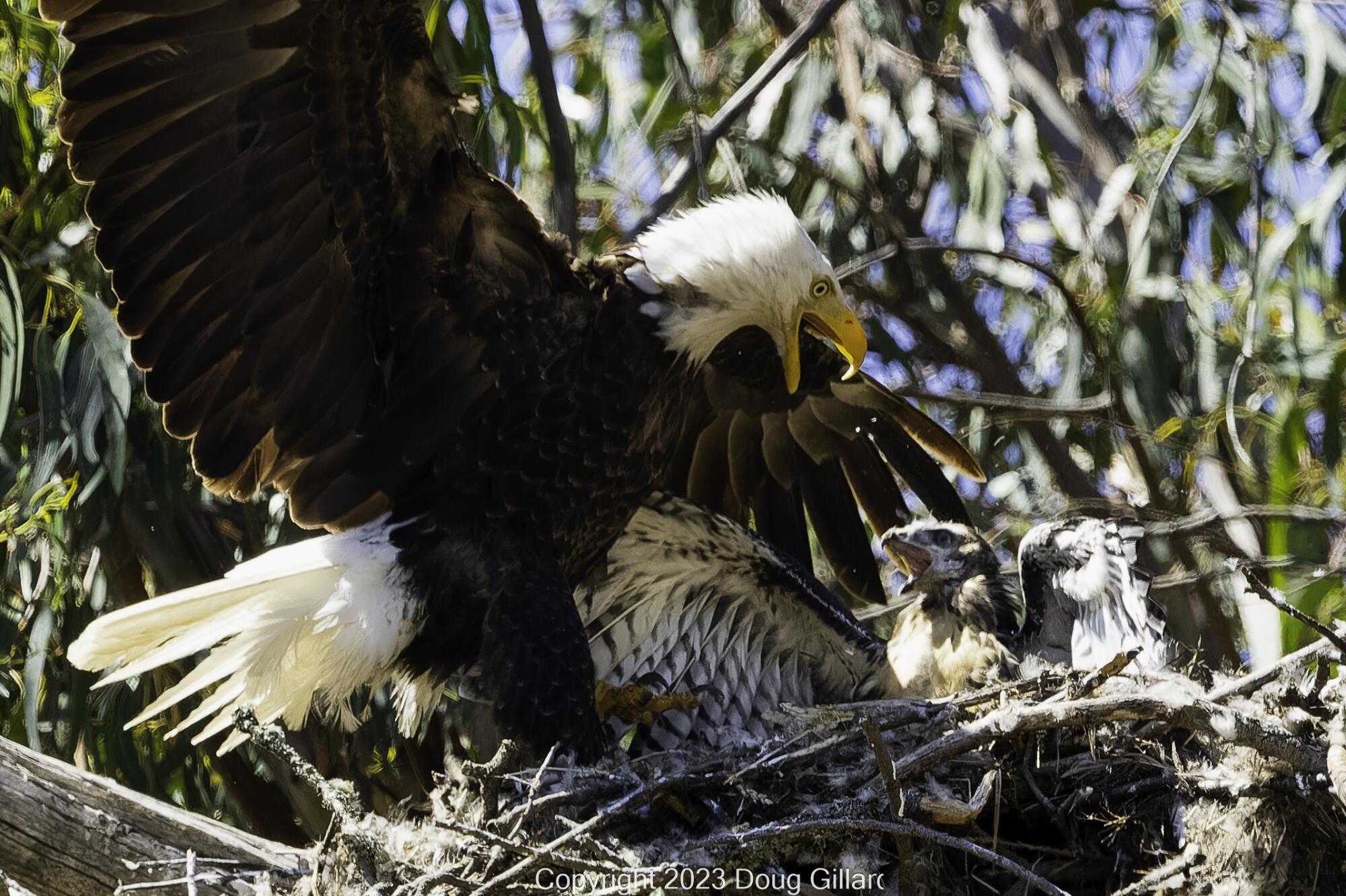
He’s hopeful for Tuffy, whom he’s been watching almost daily since the female eagle dropped him in her nest on May 20. Gillard, who usually arrives around sunup and stays through the early afternoon, said it wasn’t until the evening after Tuffy arrived that he realized the wriggling item he’d seen in the female eagle’s talons was a hawk.
He’d assumed it was a fish or a rodent. It was when he got home and reviewed his photos that he saw the food item was a baby red-tailed hawk.
“Nature can be cruel,” he posted to the NorCal Birding Facebook page along with several photographs of Tuffy in the mother’s talons.
To his surprise, when he returned the following day, the little hawk was still alive.
A week or so later, another baby hawk appeared in the nest; this one much smaller.
The following day, it was gone.
A rancher who lives nearby told Gillard that he saw the male eagle in the nest, heard screaming and saw feathers flying.
The second little hawk was not seen after that.
Federal wildlife officials have confirmed that an outbreak of avian influenza has killed 21 condors in Arizona and Utah since early March.
Gillard, who’d been watching the nest for months by himself, is now generally in the company of other birders.
On Monday morning, the crowd waxed and waned from 12 to five other observers. Suresh Govindarachavan is visiting his nephew from his home in Sydney, Australia. He heard about the nest — and along with trips to sites such as Muir Woods and Yosemite — the two took a pilgrimage to the aerie.
Others, including Daniel Nguyen and Tri Le, were taking a break from a pair of white-tailed kites they’d been watching in Milpitas, who transfer food, midair, to the delight of dozens of Bay Area amateur photographers.
“It’s been an incredible year” for nesting birds and the people who love to take photos of them, Nguyen said. “This superbloom has really had an influence.”
Just then, the mother eagle pooped from her perch next to the nest.
“Oh! That means she’s going to move,” commented a few observers, who declared poops are usually followed by flights.
Within seconds, the mother flew off toward the lake.
